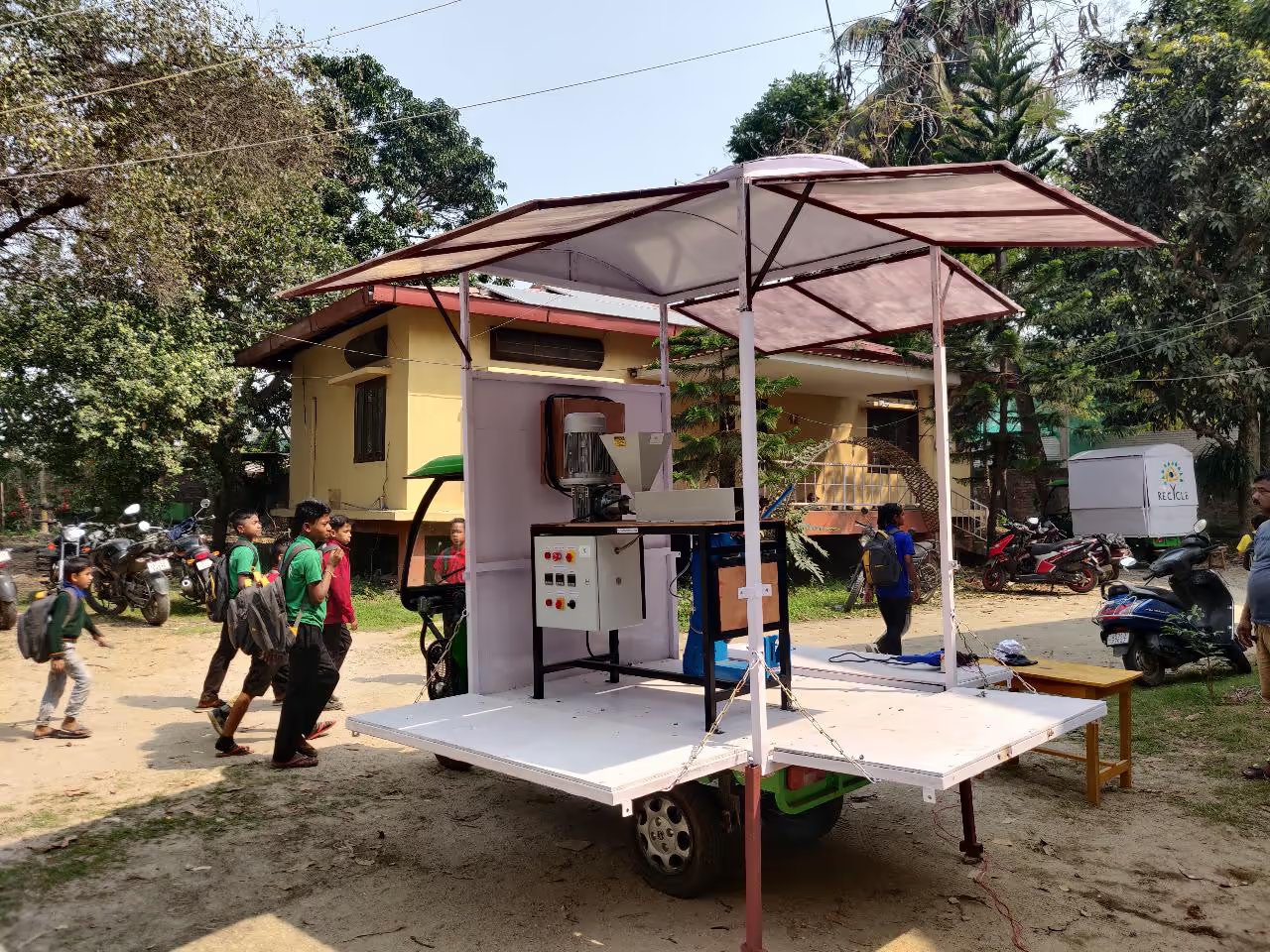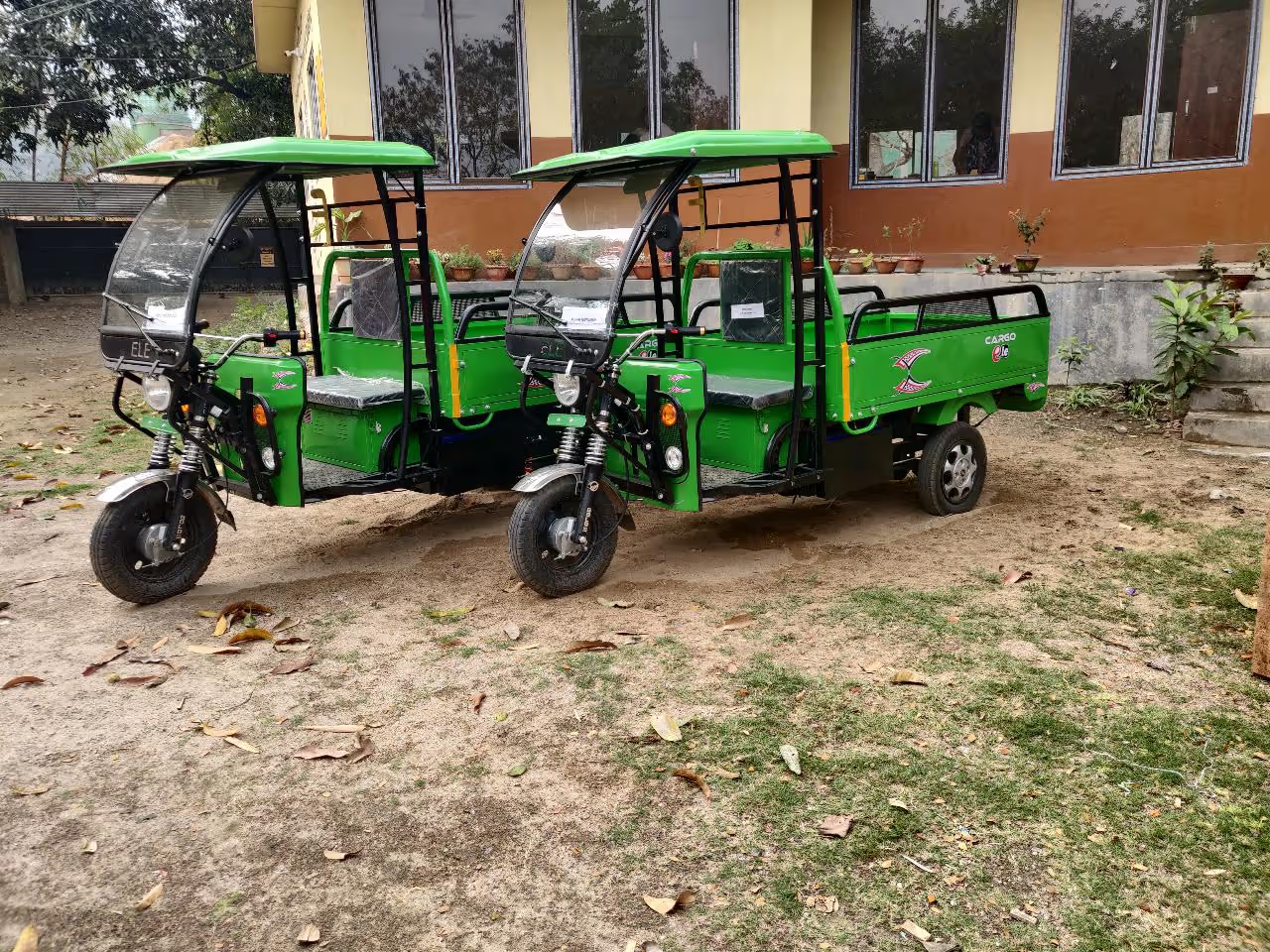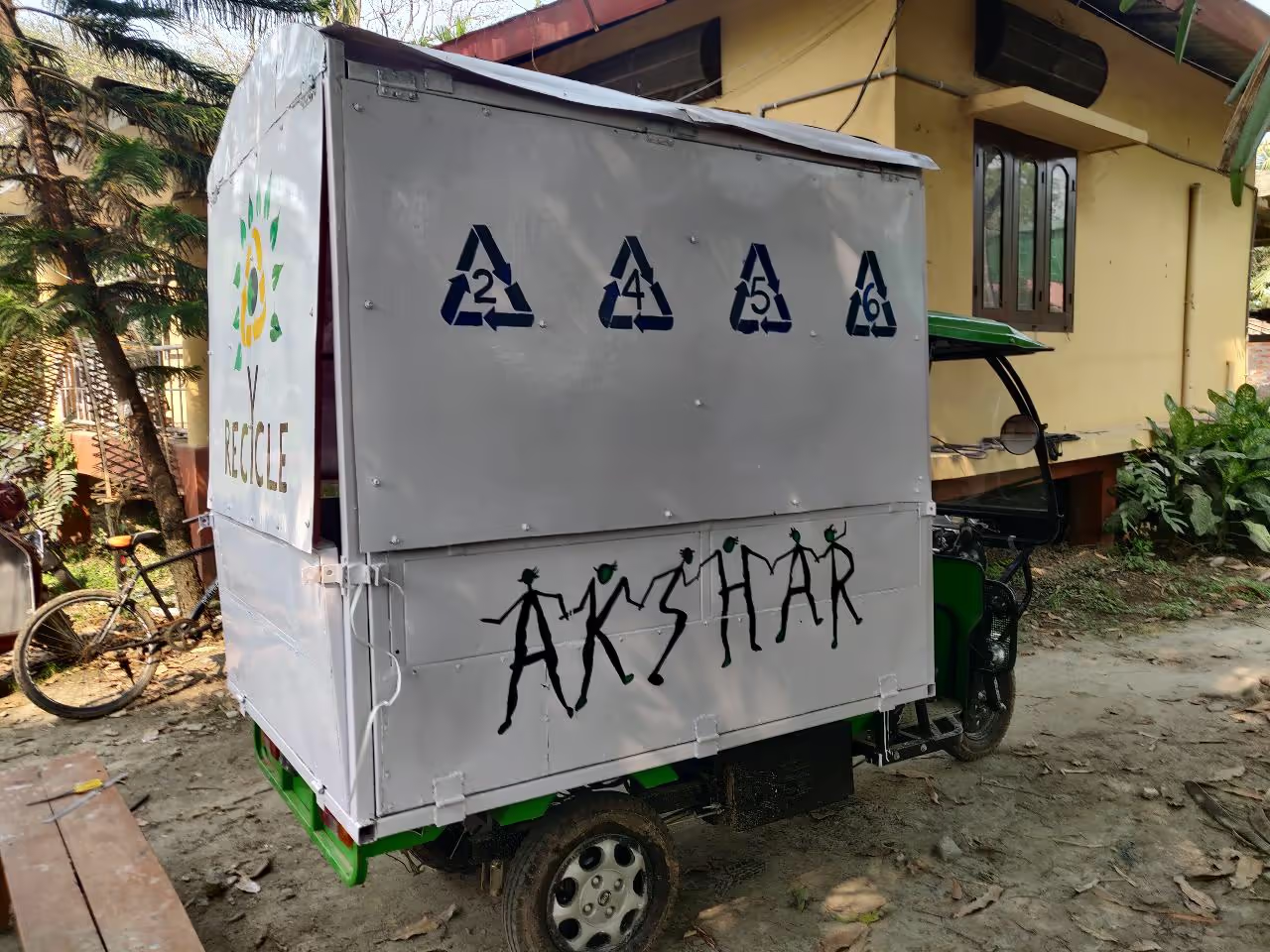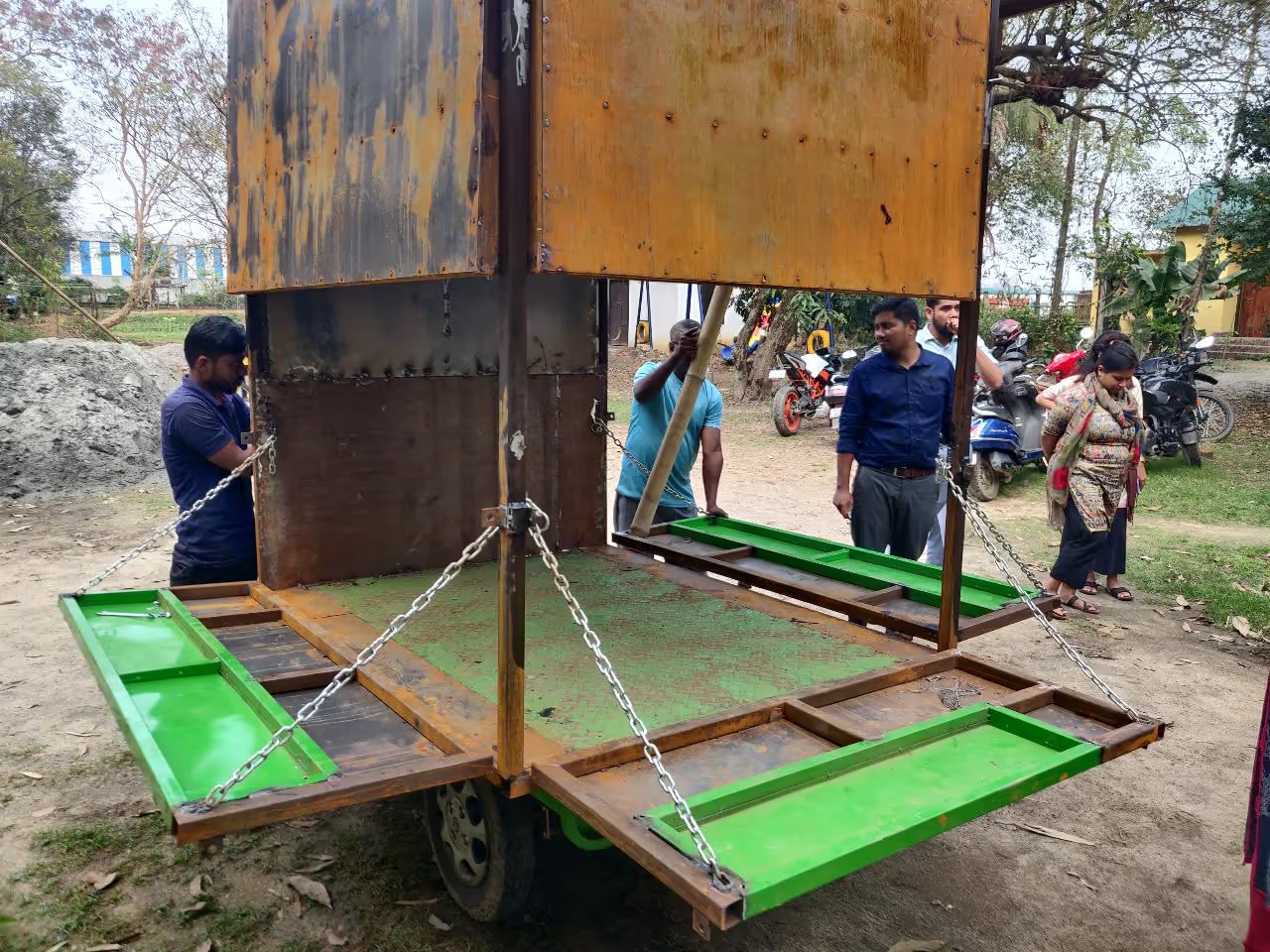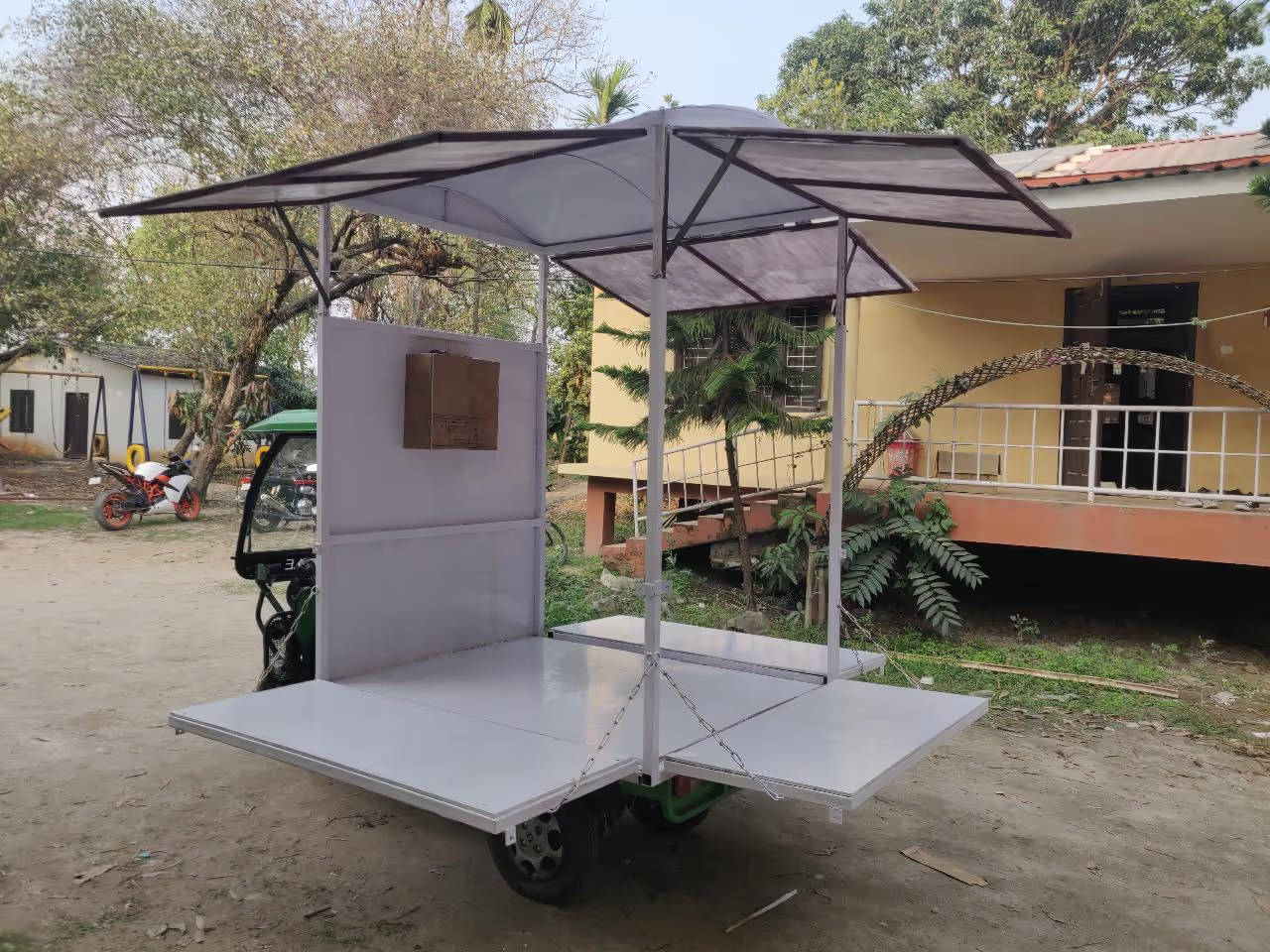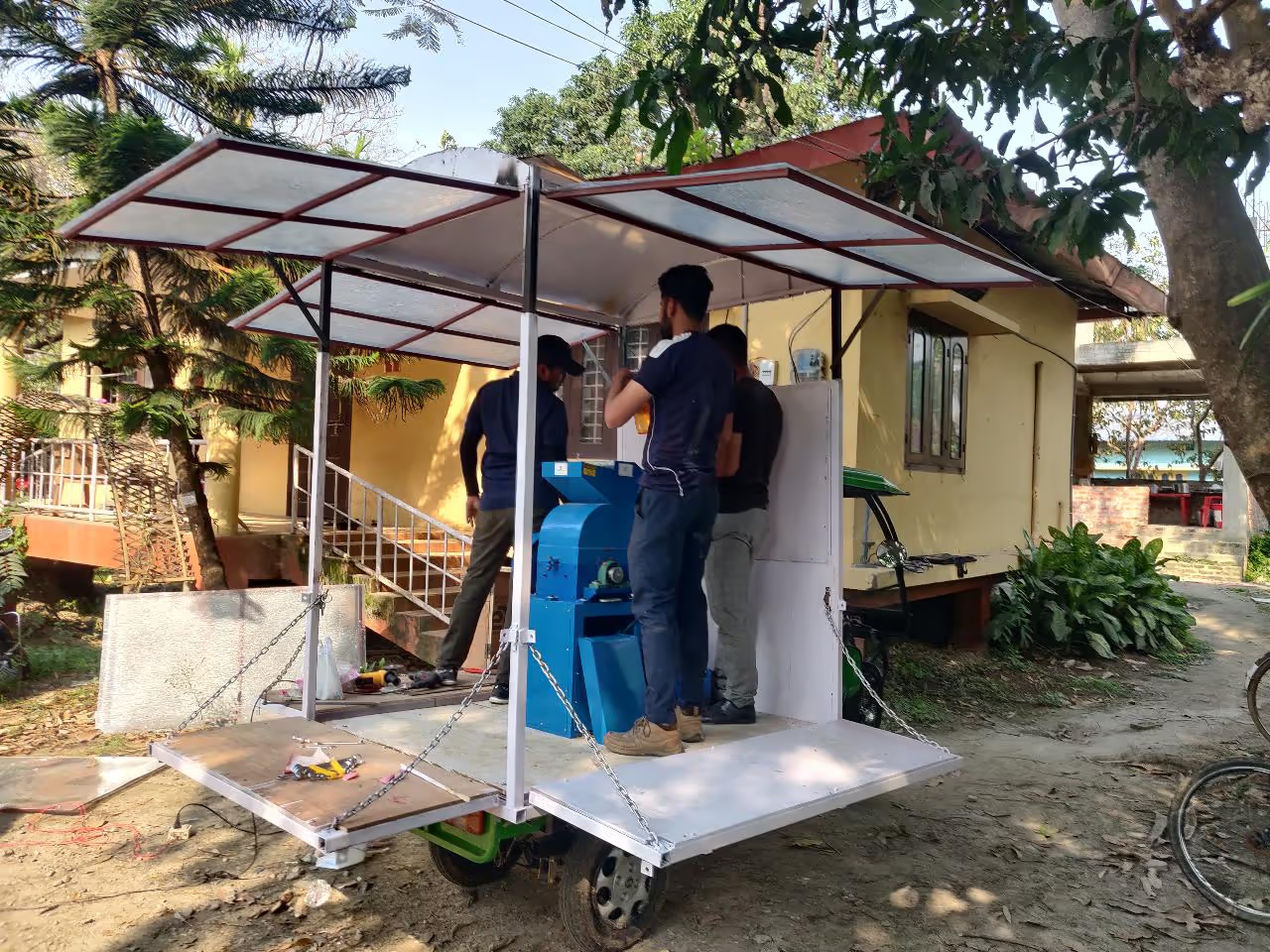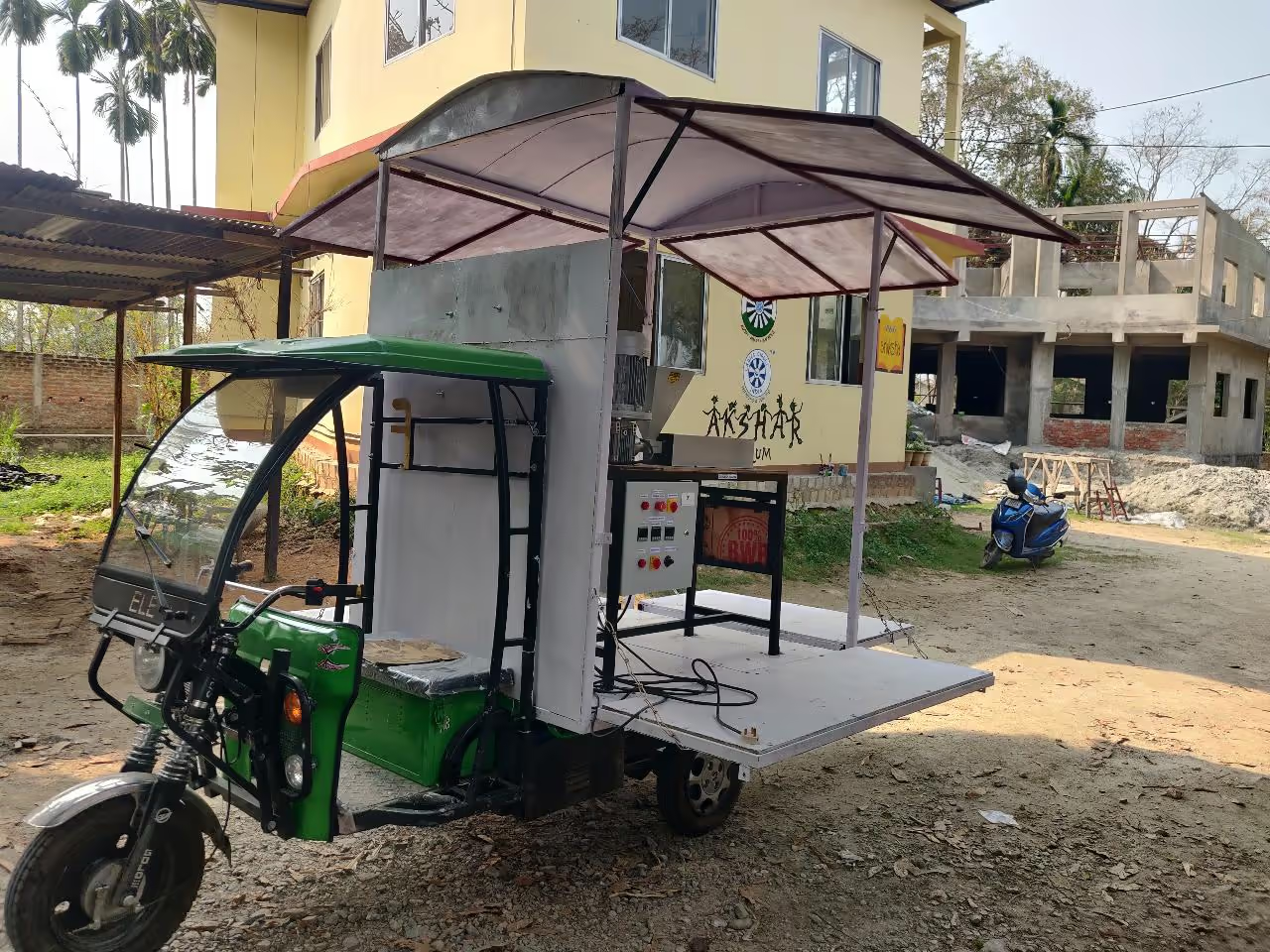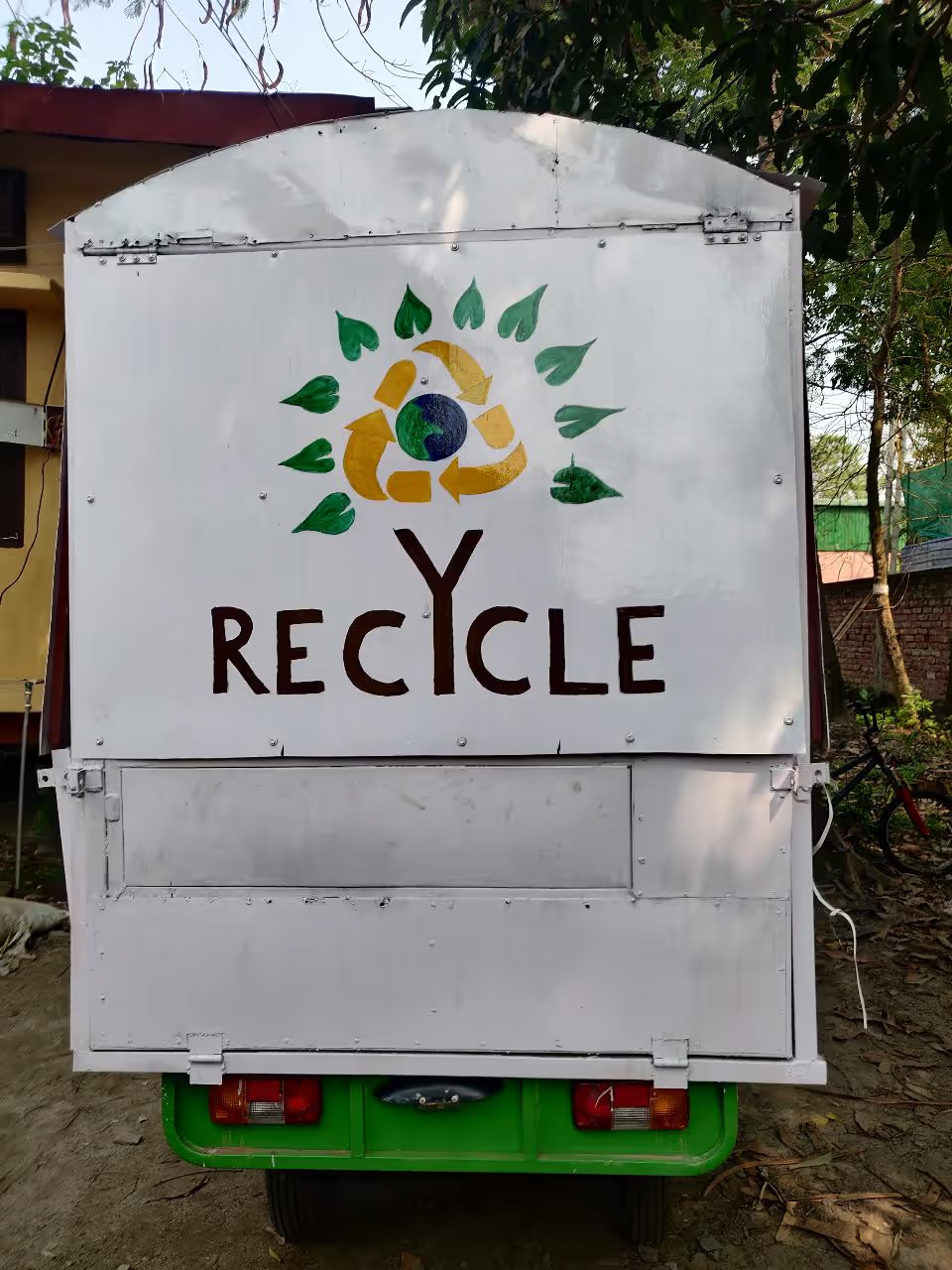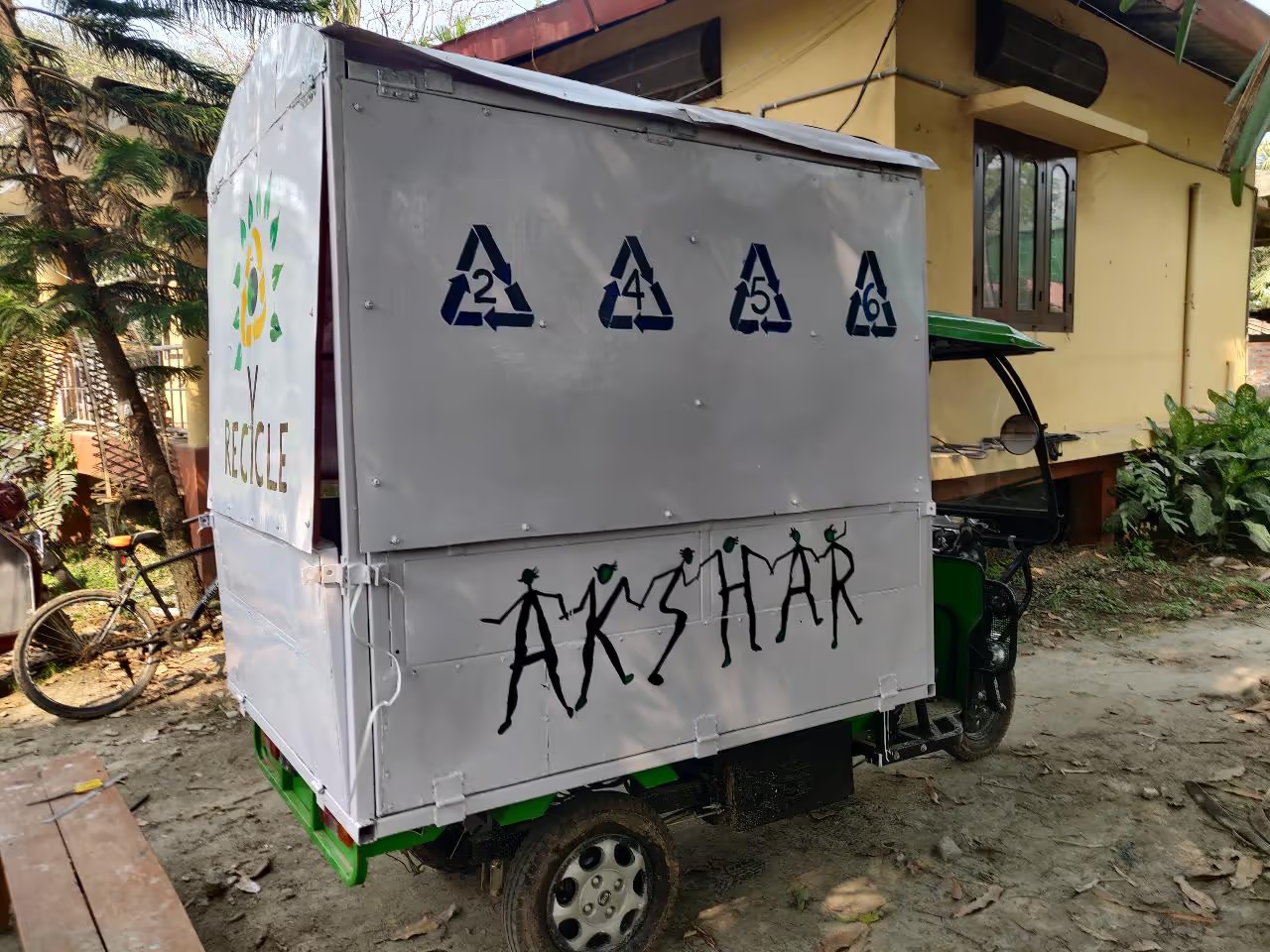In this project, we created a mobile unit for recycling plastic in various locations, initiating the process directly at the source while providing training. The unit is mounted on an electric vehicle to minimize emissions and has been tested with solar power.
Table of Contents
-
Key Considerations for Project Planning
-
Select a vehicle that accommodates all machinery and supports their weight.
-
Ensure a stable platform during operations.
-
Use a strong chassis to support weight and absorb vibrations, such as those from a shredder.
We chose an electric vehicle that can be customized to meet our needs. It was designed to maximize the working area and includes a foldable roof for weather protection.
Our workspace measures 8 x 7 feet (2.4 x 2.1 meters), allowing the installation of two machines per vehicle. With two vehicles, we installed a shredder, injection, and extrusion unit.
-
-
We began with the outer body, considering constraints like weight, size, and durability.
Initially, a metal tube frame was constructed, followed by metal sheet coverage.
The base was reinforced for stability, accommodating individuals operating the machines.
The roof height is adjustable between 7 feet and 4.5 feet (213.4 cm and 137.2 cm). It is constructed with panels.
Roofing utilizes metal tubes and fiber sheets to maintain a light system.
A wooden base serves as flooring, and all components were carefully painted.
-
While installing the machines, we focused on the following:
-
Distributing the machine's weight evenly on each vehicle
-
Securing the machine to the base to ensure stability during transport and use
The shredder, being heavier, was placed individually in one vehicle for balanced weight distribution. In another vehicle, we positioned the extrusion and injection machines with sufficient space for safe and efficient operation.
We installed a small panel on the vehicle to connect to either solar or main power sources as needed. The machines are linked to this panel, which includes the main switch.
-
- 4Test Run
After installation, we performed a test run to assess the machine's functionality and ensure the setup's stability, adding support structures around the vehicle.
The process is straightforward once the space requirements are clear.
We made several mistakes during our process but are willing to offer assistance to others attempting the same.
Hardware
- Electric vehicle with foldable roof and reinforced chassis[1][2]
- Metal tube frame with sheet coverage[1][5]
- Wooden base flooring[1][7]
- Plastic shredder unit[1][6]
- Extrusion and injection molding machines[1][6]
Tools
- Metal tube welding and cutting equipment[1][5]
- Metal sheet forming tools[1][5]
- Reinforced base construction tools (wood/metal)[1][7]
- Adjustable roof installation tools (panels, fiber sheets)[1][8]
- Support structure assembly tools for stability tests[1][10]
Software
(No specialized software mentioned in the implementation)
Electrical Components
- Dual-power connection panel (solar/main grid)[1][9]
- Energy distribution system with main switch[1][9]
- Electric vehicle charging infrastructure[1][2]
- Machine power wiring and connectors[1][9]
Safety & Stability
- Weight-balanced vehicle mounting[1][4][6]
- Machine anchoring mechanisms[1][10]
- Reinforced chassis for vibration absorption[1][3]
- Weather-resistant roof panels[1][8]
- Post-installation stability testing protocols[1][10]
Articles
- Trashpresso, a Mobile Recycling Plant that Transforms Plastic Waste
- ~~Advanced Recycling Technologies - America's Plastic Makers~~
Papers
- Interactions Between Fixed and Mobile Recycling Facilities (PDF)
- Advancing Plastic Recycling: Challenges and Opportunities in the Circular Economy
